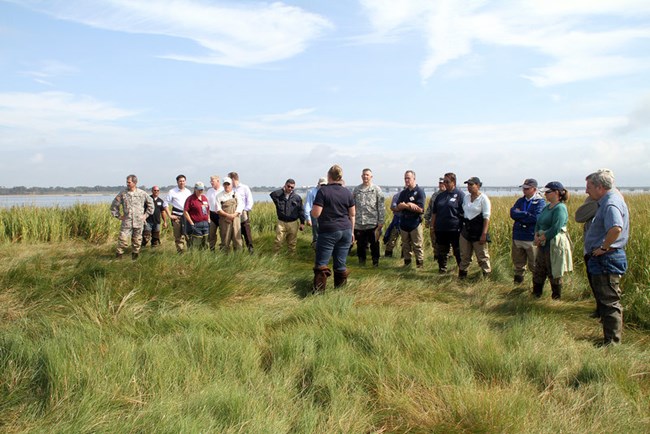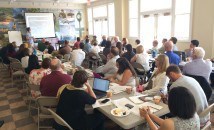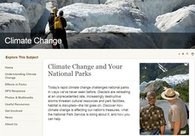
Ildiko Reisenbigler
Urban Ecology and Resilience: Gateway National Recreation Area
In recent years the National Park Service and the City of New York have created a productive partnership to plan for the future of New York City's in an era of climate change. The city parks department and the National Park Service are united in recognizing that simply managing the resources within each agency's respective boundaries no longer guarantees the resilience of natural resources. Adaptive management approaches to account for factors beyond park borders such as surrounding development, air quality, pollution, climate change, and political conditions are needed.
Managing the impacts of hurricane Sandy has already challenged traditional strategies and posed difficult questions, such as how much to intervene in habitat creation and the park's responsibility to protect neighboring communities from future weather events. Gateway and local partners increasingly rely on each other to balance community and political agendas with resource protection goals. A new Science and Resilience Institute at Jamaica Bay coordinates local stakeholders in the region to share knowledge, planning efforts and progress, and taps global expertise in resilience planning and urban ecology to enrich local efforts.
Explore Gateway National Recreation Area and their Urban Resilience Symposium.

SRI
The Park Service sponsored the creation of the Science and Resilience Institute at Jamaica Bay.
Today, the Institute:
- Conducts research to (a) understand the resilience of Jamaica Bay, New York Harbor, Hudson Raritan Estuary and Gateway National Recreation Area (b) develop models for studying the fundamental nature of resilient systems, and (b) determine how best to manage ecosystems to ensure resilience and sustainability;
- Provides technical assistance and guidance to the institute's governmental partners, including the National Park Service, New York City Parks and the New York City Department of Environmental Protection;
- Serves as a center for education and the dissemination of knowledge about processes that affect resilience and contribute to the changes in the urban ecosystem.

Last updated: March 31, 2015
